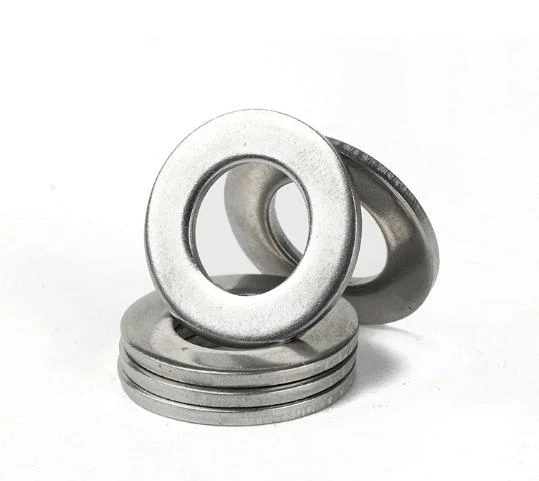

Similar Fasteners for Bolt and Hex Nut Applications in Construction and Repair
Dec . 03, 2024 17:51 Back to list
Similar Fasteners for Bolt and Hex Nut Applications in Construction and Repair
Understanding Bolt and Hex Nut An Essential Guide for Industries
In the realm of engineering and construction, fasteners play a pivotal role in ensuring the integrity and durability of various structures and mechanisms. Among the most widely utilized fasteners are bolts and hex nuts. This article aims to delve into the significance of bolt and hex nut combinations, their applications, materials, and how they promote safety and reliability across different industries.
The Basics of Bolts and Hex Nuts
Bolts are cylindrical rods with a head on one end and a thread on the other end. They are designed for fastening materials together, requiring a corresponding nut to ensure secure assembly. Hex nuts, characterized by their hexagonal shape, are a critical counterpart to bolts. They have internal threads that match the external threads on bolts, allowing them to be tightened or loosened using a wrench.
Types and Sizes
The versatility of bolts and hex nuts is evident in the various types available, each designed for specific applications. Bolts can be classified based on their head types (such as flat, round, or hex) and thread forms (such as coarse or fine). Similarly, hex nuts come in different grades, which indicate their strength and suitability for various environments.
When selecting bolts and hex nuts, size is a crucial consideration. Both must match not only in diameter but also in length and thread pitch to ensure that they can work together effectively. Standard sizes are defined by organizations like the American National Standards Institute (ANSI) and the International Organization for Standardization (ISO).
Understanding Bolt and Hex Nut An Essential Guide for Industries
The materials used in manufacturing bolts and hex nuts significantly affect their performance. Common materials include carbon steel, stainless steel, and alloy steel. Carbon steel bolts are often coated with zinc to enhance corrosion resistance, making them suitable for outdoor applications. Stainless steel, on the other hand, provides excellent resistance to rust and can be employed in marine environments and industries where hygiene is paramount, such as food processing and pharmaceuticals. Alloy steel is typically used in high-strength applications due to its superior tensile strength.
bolt hex nut

Applications Across Industries
The use of bolt and hex nut assemblies spans a wide array of industries, showcasing their importance in engineering and construction. In the automotive sector, bolts and hex nuts are fundamental in assembling engines, chassis, and various structural components. The reliability of these fasteners directly impacts vehicle safety, making strict adherence to specifications critical.
In the construction of buildings, bridges, and other infrastructures, bolts and hex nuts contribute to structural integrity. They are instrumental in connecting steel beams, securing roof trusses, and various other applications where load-bearing capacity is paramount. The selection of the right bolt and hex nut combination can mean the difference between a stable structure and catastrophic failure.
Manufacturers of machinery and equipment rely on bolts and hex nuts as well. Precision engineering requires fasteners that can withstand significant stress and strain, ensuring the functionality and longevity of machines. Properly selected and installed bolts and nuts contribute to the seamless operation of manufacturing processes—anything from assembly lines to robotics.
Installation and Maintenance
The installation of bolts and hex nuts is a straightforward process, yet it demands careful attention to detail. Proper torque specifications must be adhered to, as over-tightening can lead to bolt failure, while under-tightening can cause joints to loosen under dynamic loads. Regular inspections and maintenance are essential to identify wear or corrosion, ensuring that the assembly remains secure over time.
Conclusion
Bolts and hex nuts are not just simple fasteners; they are foundational elements that uphold the framework of modern engineering and construction. Their selection, material composition, and proper maintenance are critical factors that contribute to safety and reliability across various applications. As industries evolve and new technologies emerge, the role of bolts and hex nuts will undoubtedly adapt, continuing to be a cornerstone of structural integrity in the foreseeable future. Understanding their significance and ensuring best practices in their use is paramount for engineers, contractors, and manufacturers alike.
Latest news
-
High-Strength Hot Dip Galvanized Bolts - Hebei Longze | Corrosion Resistance, Customization
NewsJul.30,2025
-
Hot Dip Galvanized Bolts-Hebei Longze|Corrosion Resistance&High Strength
NewsJul.30,2025
-
High-Strength Hot-Dip Galvanized Bolts-Hebei Longze|Corrosion Resistance&High Strength
NewsJul.30,2025
-
Hot Dip Galvanized Bolts-Hebei Longze|Corrosion Resistance&High Strength
NewsJul.30,2025
-
Hot Dip Galvanized Bolts - Hebei Longze | Corrosion Resistance, High Strength
NewsJul.30,2025
-
High-Strength Hot Dip Galvanized Bolts-Hebei Longze|Corrosion Resistance, Grade 8.8
NewsJul.30,2025

